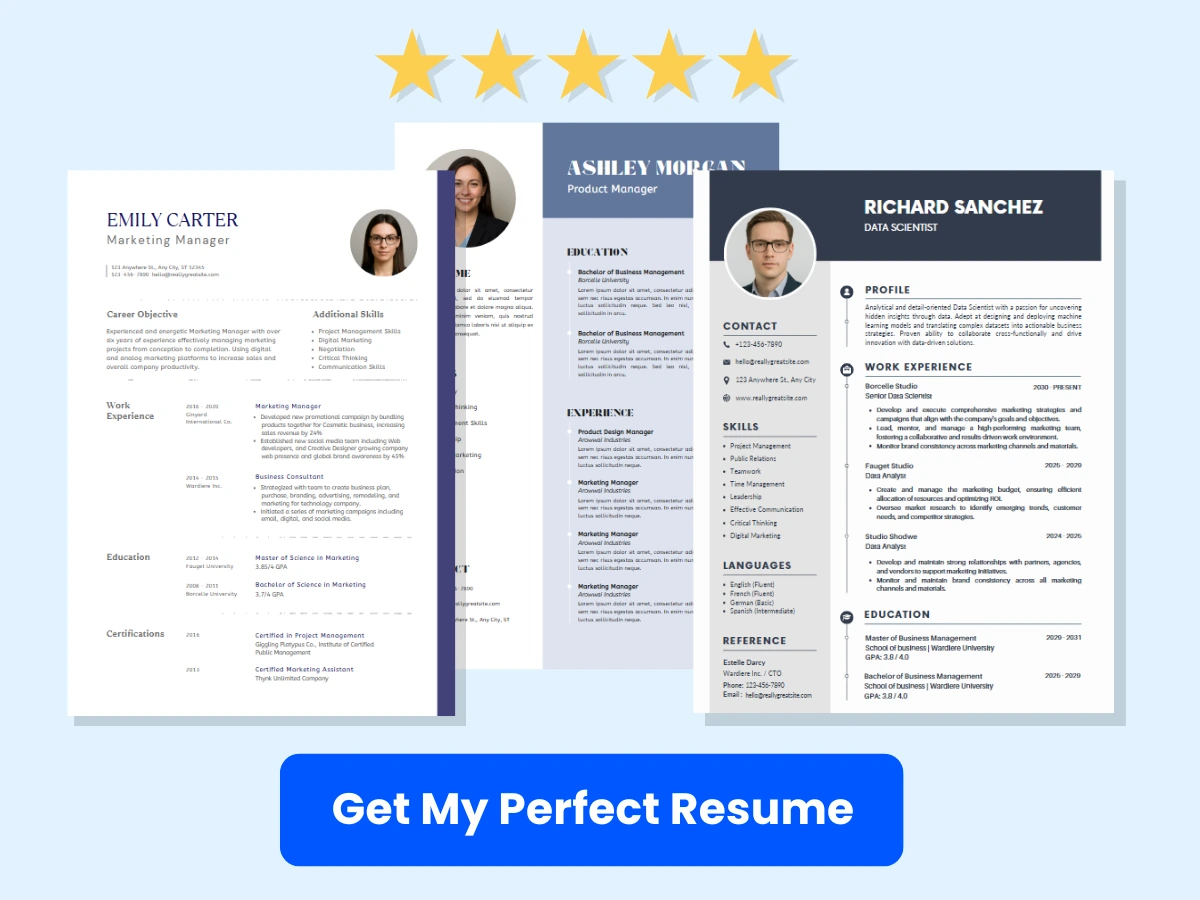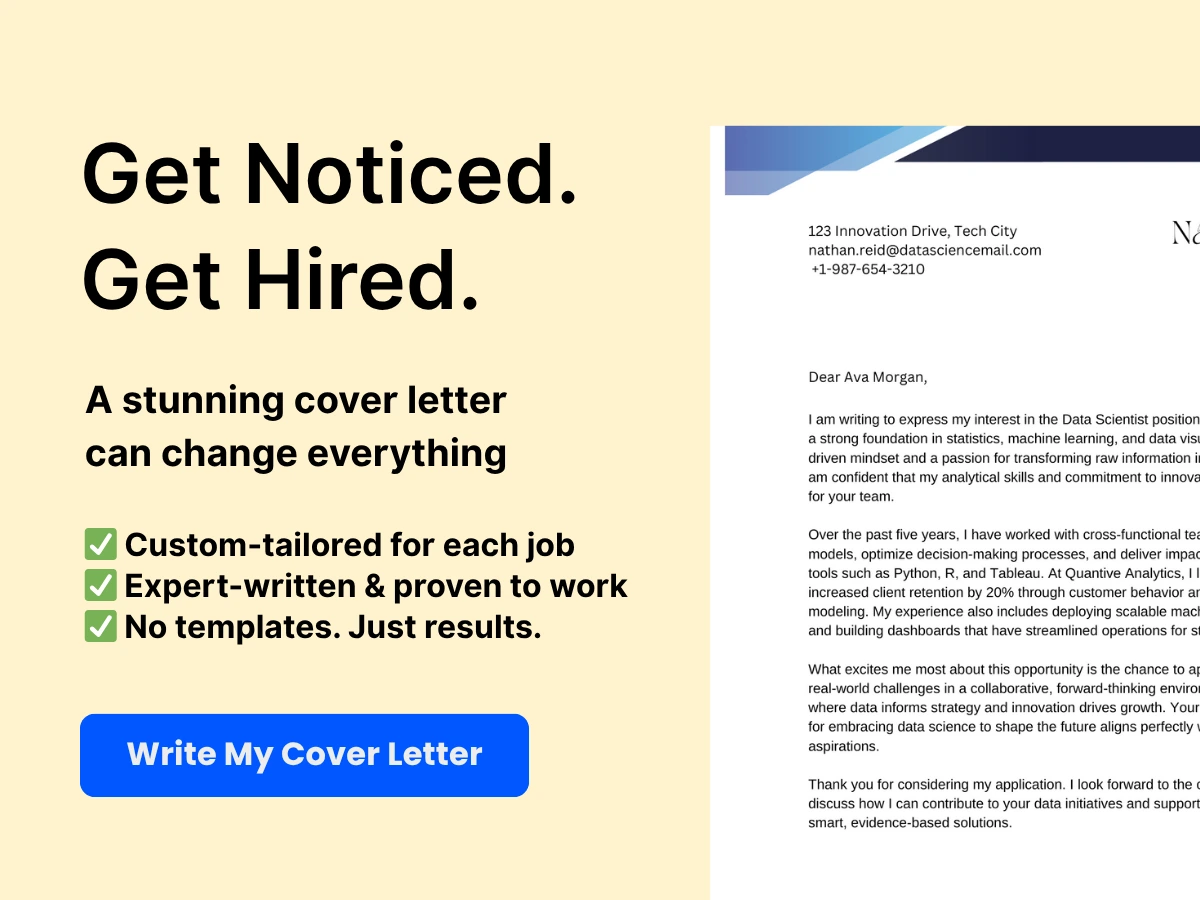Freight handlers are responsible for ensuring that goods and products are efficiently and safely moved from one location to another. Whether it’s loading trucks, transferring goods from one conveyance to another, or carrying out warehouse operations, freight handlers play an essential role in the logistics and supply chain industry.
Having a well-crafted resume is crucial for freight handlers who want to stand out from other applicants in this highly competitive industry. A well-crafted resume not only highlights your skills and experience but also conveys your commitment to excellence and professionalism. It showcases your ability to work in a fast-paced, team-oriented environment while prioritizing safety and accuracy.
A well-written resume can help you land that dream job and can be the difference between securing an interview or being overlooked. That’s why it’s important to pay attention to the details when crafting your resume. The use of keywords, action verbs, and quantifiable achievements can make all the difference when it comes to making a good impression on hiring managers.
In this article, we’ll explore the best practices for crafting an effective freight handler resume. We will provide examples of successful resumes and highlight the key elements that stand out to hiring managers. Our goal is to help you create a compelling resume that showcases your skills and experience while highlighting your commitment to safety and efficiency. Let’s get started!
Understanding the Role of a Freight Handler
A freight handler plays a critical role in the logistics industry. These individuals work in warehouses, distribution centers, airports, and shipping ports to ensure that goods are properly loaded and unloaded on trucks, planes, or ships. The primary duty of a freight handler is to ensure the safe and efficient movement of cargo from one point to another. Here is an overview of the duties and responsibilities of a freight handler.


Duties and Responsibilities
- Loading and unloading goods onto trucks, ships, or airplanes
- Verifying the accuracy of shipment contents
- Inspecting cargo for damages or defects
- Securing goods with restraints or straps
- Keeping records of inventory, to ensure the proper tracking of goods
- Operating material handling equipment such as forklifts or pallet jacks
- Assisting with the packing and unpacking of goods
- Communicating with other team members to coordinate the movement of cargo
- Following safety protocols and regulations to ensure accidents are minimized
Required Skills and Qualifications
Freight handling jobs do not typically require a college degree, but certain skills and qualifications are necessary to perform the duties effectively.
Physical Ability
As freight handlers are often required to lift and move heavy items, physical strength and endurance are essential. They must be able to handle and maneuver loads of varying weights and sizes safely.
Attention to Detail
Attention to detail is paramount for freight handlers. They must be able to identify and flag discrepancies in shipment contents accurately. They should also be able to recognize and report any damaged, lost or missing cargo.
Communication Skills
Freight handlers are an integral component of the supply chain process, and often work in teams. They must be able to communicate effectively with team members to coordinate tasks, follow safety protocols, and resolve challenging situations.
Technical Expertise
As freight handling operations are technology-driven; Cargo scanners, inventory control software and handheld devices are essential tools a freight handler must master.
Forklift Qualifications & Licenses
Operating forklifts, pallet jacks, and other material handling equipment is a core part of freight handling duties. Therefore, freight handlers must possess certifications/licenses to operate the machines as required by the state or warehouse they work.


A freight handler must possess relevant skills, qualification and professional expertise to perform the tasks required efficiently. A well-crafted resume highlighting the applicant’s proficiency in the above areas can make all the difference in differentiating one applicant from another.
Formatting Your Freight Handler Resume for Success
To make a great impression and stand out from the competition, an effective freight handler resume must not only showcase one’s skills and experience, but also have a professional and well-organized layout. In this section, we will provide you with a step-by-step guide and best practices for formatting your resume for success.
Step-by-Step Guide to Formatting Your Freight Handler Resume:
-
Start with a clear and concise header section that includes your name, professional title, contact information (phone number, email address, and location), and LinkedIn profile URL (if applicable).
-
Write a compelling and concise summary statement that highlights your key skills, experience, and achievements as a freight handler.
-
Use bullet points to list your relevant work experience, starting with your most recent position. Make sure to include the name of the company, job title, dates of employment, and a brief description of your duties and accomplishments.


-
Highlight your skills and certifications. Consider creating a separate skills section where you can list your relevant industry certifications, software skills, and other relevant skills.
-
Include your education and training. List your highest degree or diploma first, followed by any relevant training or certifications.
-
Don’t forget to proofread and edit your resume. Make sure there are no typos, grammatical errors, or formatting issues.
Best Practices for Choosing Fonts, Headings, and Formatting Styles:
When it comes to choosing fonts and formatting styles for your freight handler resume, it’s important to keep it simple and professional. Here are some best practices to consider:
-
Stick to standard fonts such as Arial, Helvetica, or Times New Roman. Use a font size of 10-12 points for the body text, and slightly larger font for the headings.
-
Use bold, italic, or underline sparingly, and for emphasis only.
-
Divide your resume into clear sections with headings such as “Summary,” “Experience,” “Skills,” and “Education.”


-
Use bullet points to make your content easy to read and scan.
-
Choose a clean and professional layout that is easy on the eyes and visually appealing.
By following these guidelines, you can format your freight handler resume for success and make a great impression on potential employers. Remember to customize your resume for each job application, and tailor it to the specific requirements of the position. With the right layout and formatting, you can showcase your skills and experience as a freight handler and increase your chances of landing a job in this exciting and dynamic field.
Crafting an Eye-Catching Freight Handler Resume Summary
When it comes to creating a resume summary for a freight handling position, there are a few key tips to keep in mind to help you stand out from the competition. Here are some tips for crafting a strong resume summary that showcases your qualifications and relevant experience:
- Keep it concise: Your resume summary should be a brief, one or two sentence statement that highlights your strengths and experience.
- Use keywords: Be sure to include keywords relevant to the job description to make sure your resume makes it past any applicant tracking systems (ATS) that may be used.
- Highlight your achievements: Rather than simply listing your job duties, include specific accomplishments that demonstrate your skills and experience.
- Tailor it to the job: Customize your resume summary to fit the specific job you are applying for, incorporating any relevant skills or experience that match the job description.
Now, let’s take a look at some examples of effective resume summaries for freight handling positions:
- Experienced Warehouse Associate with 5+ years of handling freight in a fast-paced environment. Proven track record of exceeding productivity goals and ensuring timely delivery of shipments. Skilled in operating forklifts and other heavy machinery.
- Results-driven Freight Handler with a background in logistics and supply chain management. Excel in coordinating shipments, managing inventory, and ensuring accuracy in all paperwork. Proficient in using warehouse management systems (WMS) to track and monitor shipments.
- Detail-oriented logistics professional with 3+ years of experience in managing freight transportation and scheduling. Adept at coordinating with carriers, vendors, and customers to ensure timely delivery of products. Experienced in using transportation management systems (TMS) to optimize routing and reduce costs.
By following these tips and incorporating the examples above, you can craft an eye-catching resume summary that will catch the attention of hiring managers and help land you the job!


Highlighting Your Key Skills in Your Freight Handler Resume
Your key skills and abilities as a freight handler are what will set you apart from other candidates for the job. It’s important to highlight these on your resume to make sure that potential employers can quickly see what you bring to the table. Here are some tips for effectively highlighting your key skills in your freight handler resume:
Guidance on which skills and abilities to include on your resume
Before you start crafting your resume, take a close look at the job description for the freight handler position you’re applying for. Look for mentions of specific skills and abilities that the employer is looking for. Make sure to include any of these that apply to you in your resume.
In addition, consider your own experience and abilities as a freight handler. What sets you apart from other candidates? What skills and qualities have you developed in your career that will be an asset to the employer? Make sure to highlight these as well.
Some skills and abilities that are important for freight handlers to have include:
- Physical fitness and strength
- Attention to detail
- Customer service skills
- Ability to operate machinery and equipment
- Knowledge of safety regulations and procedures
- Ability to work in a fast-paced, high-pressure environment
- Organizational and time management skills
Examples of how to include skills in your resume in a way that catches the reader’s eye
It’s not enough to simply include a list of your skills and abilities on your resume. You need to make sure that they stand out and catch the reader’s eye.
One effective way to do this is to use bullet points to highlight your skills and abilities. For example:


- Demonstrated physical fitness and strength through successful completion of multiple heavy lifting and loading tasks, including [specific examples].
- Proven attention to detail through accurate inventory tracking and order fulfillment, resulting in [specific results].
- Consistently provided excellent customer service by [specific actions taken], resulting in [specific positive feedback or reviews].
Another effective way to highlight your skills and abilities is to incorporate them into your job descriptions. For example:
- Managed all aspects of freight handling, including loading, unloading, and tracking inventory.
- Operated various types of machinery and equipment, including forklifts and pallet jacks.
- Ensured compliance with all safety regulations and procedures, resulting in zero workplace accidents.
Using active verbs and focusing on results can also help make your skills and abilities stand out on your resume. For example:
- Successfully organized and managed multiple simultaneous shipments, resulting in on-time delivery and satisfied customers.
- Improved operational efficiency by [specific action taken], resulting in [specific results].
- Recognized for outstanding problem-solving skills and ability to quickly resolve issues that arise in the freight handling process.
By following these tips, you can effectively highlight your key skills and abilities in your freight handler resume, making it more likely that you’ll land the job you want.
Listing Your Work Experience on Your Freight Handler Resume
When it comes to creating a successful Freight Handler Resume, listing your work experience correctly and effectively is critical. You want to ensure that you are showcasing your relevant experience in the best possible light, highlighting your skills and achievements while keeping it concise and to the point. In this section, we’ll discuss strategies for choosing and listing relevant work experience, as well as best practices for describing job duties and accomplishments effectively.
Strategies for Choosing and Listing Relevant Work Experience
First and foremost, you need to make sure that the work experience you are listing on your resume is relevant to the job you are applying for. This means carefully reviewing the job description and tailoring your experience to match the requirements of the position. Highlight the experiences that show you have the necessary skills and qualifications to excel in the role.


Additionally, only list the most recent and relevant work experience. This means leaving out any jobs that are no longer relevant or only tangentially related to the freight handling position you are applying for. When it comes to listing your experience, focus on quality over quantity.
Best Practices for Describing Job Duties and Accomplishments Effectively
When describing your job duties and accomplishments, it’s important to keep in mind that the hiring manager is looking for specific information about your skills and experience. Be sure to start with action verbs like “managed,” “supervised,” “coordinated,” and “implemented” to describe your role in each position.
Describe your accomplishments and the results you delivered, rather than just your responsibilities. This means including metrics where possible. For example, if you increased productivity, be sure to include by what percentage or number. If you helped reduce costs, provide specific dollar amounts.
In addition, tailor your language to the specific job you are applying for. Use industry-specific terminology and highlight any relevant certifications and training you have earned. Finally, proofread your descriptions carefully to ensure you are presenting yourself as the qualified and professional candidate you are.
Listing your work experience effectively is key to creating a compelling Freight Handler Resume. By choosing and listing relevant experience and describing your job duties and accomplishments effectively, you can make a strong impression and increase your chances of landing your dream job in the freight handling industry.
Education and Training for Freight Handlers
Freight handling is a physically demanding job that requires a certain skillset and knowledge base. Having the appropriate education and training can help set you apart from other candidates and make you a more attractive choice for potential employers.
Relevant Education Programs
You don’t need a specific degree to become a freight handler, but certain educational programs can equip you with the necessary skills and knowledge to excel in this field. Some relevant educational options include:
- Certificate programs in logistics and supply chain management: These programs provide students with a broad overview of the logistics industry, including specific skills related to managing inventory, warehousing, and transportation.
- Associate degree programs in logistics or transportation: These programs are more in-depth than certificate programs and can take up to two years to complete. They cover topics such as supply chain management, logistics technology, and global logistics.
- Bachelor’s degree programs in logistics or supply chain management: These four-year degree programs dive deeper into topics such as strategic planning, logistics analytics, and risk management.
Relevant Training Programs
Training programs can provide you with hands-on experience and specific skills that are directly applicable to freight handling. Here are some examples of relevant training programs:
- Powered industrial truck (PIT) training: This training teaches you how to safely operate machinery, such as forklifts and pallet jacks.
- OSHA safety training: This training teaches you about important safety procedures related to working with heavy machinery and chemicals.
- Hazardous materials (HazMat) training: This training is necessary for handling and transporting dangerous goods.
Including Education and Training on Your Resume
When it comes to including education and training on your resume, there are several best practices to follow:
- List your education and training in reverse chronological order: Start with your most recent degree or training program and work backwards.
- Include relevant coursework or modules: If you took specific courses or modules that are relevant to freight handling, make sure to include them.
- Be specific about the skills you gained: Don’t just list the name of the training program, but also explain the specific skills or knowledge you gained from it. For example, instead of just listing “PIT training,” write “Completed PIT training, including safe operation of forklifts and pallet jacks.”
- Quantify your achievements: If you received any awards or certifications related to your education or training, make sure to include them on your resume.
By following these best practices, you can effectively showcase your education and training on your resume and demonstrate to potential employers that you are a qualified and competent candidate for a freight handling position.
Certifications and Licenses for Freight Handlers
As a freight handler, obtaining relevant certifications and licenses can not only enhance your skills but also serve as a competitive advantage in the job market. Here are some relevant certifications and licenses that you should consider:
Certifications
Certified Logistics Associate (CLA)
The CLA certification from the Manufacturing Skill Standards Council (MSSC) is a great starting point for those who are new to the logistics industry. The certification covers the fundamental knowledge and skills required for various aspects of logistics, including supply chain operations, safety, and transportation.
Certified Logistics Technician (CLT)
The CLT certification from the MSSC is a more advanced certification for individuals who are looking to further their logistics knowledge and skills. The certification covers topics such as inventory control, warehouse operations, and quality control.
Certified Supply Chain Professional (CSCP)
The CSCP certification from the Association for Supply Chain Management (ASCM) is a globally recognized certification for professionals who are involved in supply chain operations. The certification covers topics such as supplier and customer relations, inventory management, and logistics.
Licenses
Commercial Driver’s License (CDL)
A CDL is required for individuals who operate commercial vehicles. Depending on the type of freight and vehicle, different classes of CDL are required.
Hazardous Materials (HazMat) Endorsement
Individuals who transport hazardous materials must obtain a HazMat endorsement on their CDL. The endorsement involves passing a background check and a knowledge test on the safe handling of hazardous materials.
When including certifications and licenses on your resume, make sure to follow these tips:
- Add your certifications and licenses to a separate section on your resume, either under “Education” or “Skills”.
- Include the full name of the certification/license, the name of the issuing organization, and the date obtained.
- If you have multiple certifications/licenses, list them in order of relevance to the job you are applying for.
- Mention any recertification or continuing education requirements necessary to keep the certification/license current.
By obtaining relevant certifications and licenses and showcasing them on your resume, you can stand out as a well-qualified candidate in the freight handling industry.
Example Freight Handler Resume for Inspiration
Are you looking for inspiration while crafting your resume as a freight handler? Look no further! Here’s a full sample resume including job experience, education, and certifications to guide you.
Jane Doe
123 Main Street, Anytown, USA | 555-555-5555 | [email protected]
Objective
To obtain a position as a freight handler with ABC Company utilizing my skills and experience in logistics and warehouse operations.
Experience
Freight Handler, XYZ Company (2018-2021)
- Safely loaded and unloaded trucks.
- Verified accuracy of shipments and performed quality assurance checks.
- Operated forklifts and pallet jacks to move and transport goods.
- Maintained cleanliness and organization of warehouse.
Warehouse Associate, DEF Company (2015-2018)
- Participated in loading and unloading shipments.
- Managed inventory and verified accuracy of shipments.
- Supported warehouse operations and other tasks as assigned.
Education
Bachelor of Science in Supply Chain Management, Anytown University (2015)
- Relevant coursework:
- Logistics and Transportation Management
- Global Sourcing and Procurement
- Supply Chain Network Design
Certifications
- Certified Forklift Operator, OSHA (2017)
- Hazardous Materials Endorsement, TSA (2020)
- Transportation Worker Identification Credential (TWIC), TSA (2021)
Analysis
What makes this resume effective? Jane Doe’s resume demonstrates her relevant experience and education that aligns with the requirements for a freight handler position. She also includes relevant certifications that showcase her commitment to safety and compliance.
Her objective statement clearly states her career goals and emphasizes her strengths in logistics and warehouse operations. The experience section details her responsibilities and accomplishments in previous roles, highlighting her skills in loading and unloading trucks, verifying shipment accuracy, and operating material handling equipment.
The education section underscores her academic background in supply chain management and the relevant coursework she completed. The certifications section showcases her industry-specific training and a commitment to maintaining high standards of safety and compliance.
Jane Doe’s resume is well-crafted and showcases her relevant skills, experience, and education. This sample resume serves as a great inspiration for those looking to create an effective resume for a freight handler position.
Additional Tips for Crafting an Excellent Freight Handler Resume
When crafting a resume for a freight handler position, there are additional tips that can help you stand out from other candidates. Below are some miscellaneous guidance for optimizing your resume:
Highlight Relevant Skills
As a freight handler, you will need to have specific skills such as inventory management, warehouse organization, and shipping and receiving. Make sure to highlight these skills on your resume, as well as any other relevant experience or certifications.
Show Quantifiable Achievements
Quantifiable achievements help to demonstrate your accomplishments and potential impact in a previous role. For example, if you improved warehouse efficiency by implementing a new system, indicate how much time and money your efforts saved the company. This will help to show potential employers what you can bring to their organization.
Keep it Easy to Read
Your resume should be easy to read and skim through. Avoid large paragraphs and use bullet points to highlight key information. Use a clean and simple format, and make sure to proofread for any errors or typos.
Customize for specific job
Your resume should be tailored for the specific job you are applying for. Look at the job description and requirements and make sure your resume highlights your relevant skills and experience.
Common Mistakes to Avoid
When crafting a freight handler resume, there are common mistakes to avoid that can hinder your chances of getting hired. These include:
Generic Objective Statements
Objective statements such as “to obtain a position in a fast-paced environment” are too general and do not provide any relevant information. Instead, use a professional summary or personal branding statement that showcases your skills and experience.
Lack of Specificity
Be specific about your accomplishments and experience. Rather than simply stating that you have experience in warehouse logistics, give specific examples of how you have implemented successful systems or processes.
Omitting Relevant Information
Make sure to include all relevant information on your resume, including any relevant work experience, certifications, and education. Skipping over important details that could set you apart from other candidates can cause you to miss out on potential job opportunities.
Too Much Information
While you want to provide enough information to showcase your skills and experience, avoid overloading your resume with unnecessary information. Focus on providing relevant information that can help to demonstrate why you are the best candidate for the job.
By following these tips and avoiding common mistakes, you can craft an excellent freight handler resume that will stand out to potential employers.
Related Articles
- Full Time Nanny Resume: Examples and Best Practices
- Importance of Understanding Your Work Values
- Patient Registrar Resume: Winning Examples
- Freelance Web Developer Resume: Example
- Key Skills for an Assistant Editor Position








